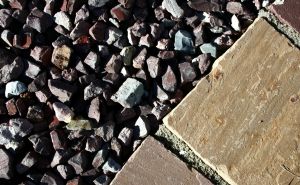You might want to be a little more careful if you work in the landscaping industry. Officials with the Occupational Safety and Health Administration (OSHA) just released a new publication to warn workers about the hazards that are involved when using stone-cutting machines. The purpose of this publication is also to help to reduce — and ultimately eliminate — the risk of injury when using these devices.

Our Dedham workers’ compensation attorneys understand that these stone-cutting machines, also known as stone slippers, stone cutters, stone masons and rock cutters, have hydraulically operated rams that are used to cut and split stone products. These machines come as portable or stationary devices. They also come with high risk for cut, laceration and amputation injuries. The Bureau of Labor Statistics (BLS) reports that there were close to 200 injuries reported in 2010 from using shears, which are similar to stone cutters. Of these accidents and injuries, about 50 were punctures, lacerations and cuts. They usually result when these machines and devices are not properly guarded.
Accident Prevention Methods:
-Use guards. These can help reduce the worker’s access to the blades on the machine. This is oftentimes referred to as the “point of operation.”
-Ensure that these guards and their components are installed properly and that they are inspected daily.
-Make sure that all workers operating these devices are provided with the proper training, instruction and information to use them. Uneducated and under-qualified workers run a higher risk of accidents and injuries.
-It’s important to remember that employers and companies are required to provide healthful and safe workplaces for all workers. It’s all listed as a part of the Occupational Safety and Health Act of 1970 (OSH Act).
We’re here with some safety measures that can help to reduce the risks of these kinds of accidents.
Identify risks and hazards before operation:
-Make sure workers are guarding the point of operation. Their body should be no where near this area during operation cycles.
-Check before use. Does the machine have the proper guard?
-Can the guard be easily bypassed or moved?
-Does the guard do its job? Make sure operators cannot get their fingers or hands anywhere near the danger areas.
-Inspect routinely. Are there any changes that could be made to make these devices safer for all employees?
-Are you reading, understanding and operating by the recommendations from the manufacturer?
Each and every year, there are close to 140,000 people who suffer an amputation injury. Men are more likely to suffer this kind of injury — especially those between the ages of 41 and 70.
Don’t let it happen to you. Make sure all dangerous devices are equipped with the proper safe guards on each and every work site.
If you are injured on the job in Massachusetts, call Jeffrey Glassman Injury Lawyers for a free and confidential consultation to discuss your workers’ compensation claim– (617) 777-7777.
More Blog Entries:
Worker Suffocation in Grain Bins Serious and Ongoing Problem , Massachusetts Workers’ Compensation Lawyers Blog, March 28, 2013
Massachusetts Store Cited for Overhead Fall Hazards , Massachusetts Workers’ Compensation Lawyers Blog, March 26, 2013
 Massachusetts Workers Compensation Lawyers Blog
Massachusetts Workers Compensation Lawyers Blog

